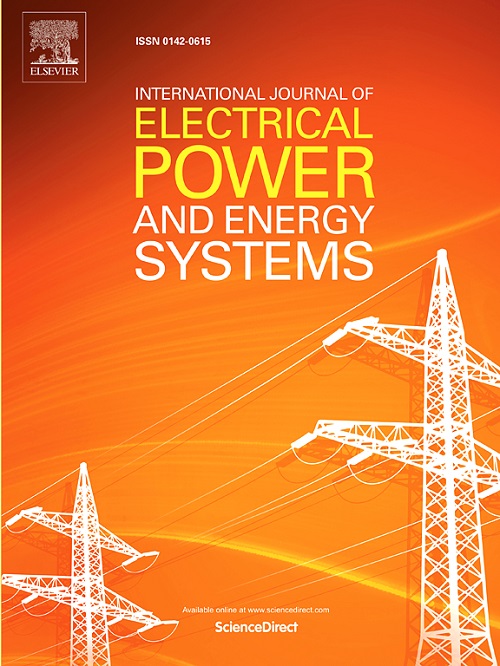直流断路器与限流器配合的直流配电网故障定位方法
IF 5
2区 工程技术
Q1 ENGINEERING, ELECTRICAL & ELECTRONIC
International Journal of Electrical Power & Energy Systems
Pub Date : 2025-05-15
DOI:10.1016/j.ijepes.2025.110684
引用次数: 0
摘要
为了提高保护系统的可靠性,准确识别直流网络中的故障距离,提出了一种利用现有直流断路器和限流器的协同作用进行故障定位的方法。该方法通过重新利用现有DCCB组件并引入专用的信号注入分支,有效地实现了单端信号注入和识别。同时,引入了一种有效的部件协同控制策略,提高了故障定位方法的集成度。通过对测距电路内电感电流衰减的分析,建立了故障距离与故障电阻之间的关系,从而开发了故障定位算法。利用PSCAD/EMTDC软件建立了直流配电网模型,并在MATLAB中对配电网位置计算方法进行了仿真。仿真结果验证了所提出的故障定位方法在准确确定故障距离和电阻方面的有效性。此外,该方法已证明其在不同电缆类型、噪声水平、采样频率和电阻条件下的鲁棒性。与现有的故障定位方法相比,所提出的故障定位方法在精度和构造复杂性方面具有明显的优势。©2017 Elsevier Inc.版权所有。本文章由计算机程序翻译,如有差异,请以英文原文为准。
A fault location method for DC distribution networks with DC circuit breaker and current limiter coordination
To enhance the reliability of the protection system and accurately identify fault distances in DC networks, a fault location method is proposed, which leverages the coordination of existing DC circuit breakers (DCCBs) and current limiters. The proposed method effectively achieves single-end signal injection and identification by repurposing existing DCCB components and incorporating a specialized signal injection branch. Concurrently, an efficient cooperative control strategy for the components is introduced to enhance the integration of the fault location method. By analyzing the inductor current decay within the ranging circuit, the relationship between fault distance and fault resistance is established, leading to the development of a fault location algorithm. A DC distribution network model is built by PSCAD/EMTDC, and the location calculation method is simulated in MATLAB. The simulation results validate the efficacy of the proposed fault location method in accurately determining both the distance and resistance of faults. Moreover, this method has demonstrated its robustness across diverse cable types, noise levels, sampling frequencies, and resistance conditions. The proposed fault location method offers distinct advantages over existing techniques in terms of both accuracy and lower complexity of its construction.
© 2017 Elsevier Inc. All rights reserved.
求助全文
通过发布文献求助,成功后即可免费获取论文全文。
去求助
来源期刊
CiteScore
12.10
自引率
17.30%
发文量
1022
审稿时长
51 days
期刊介绍:
The journal covers theoretical developments in electrical power and energy systems and their applications. The coverage embraces: generation and network planning; reliability; long and short term operation; expert systems; neural networks; object oriented systems; system control centres; database and information systems; stock and parameter estimation; system security and adequacy; network theory, modelling and computation; small and large system dynamics; dynamic model identification; on-line control including load and switching control; protection; distribution systems; energy economics; impact of non-conventional systems; and man-machine interfaces.
As well as original research papers, the journal publishes short contributions, book reviews and conference reports. All papers are peer-reviewed by at least two referees.

 求助内容:
求助内容: 应助结果提醒方式:
应助结果提醒方式:


